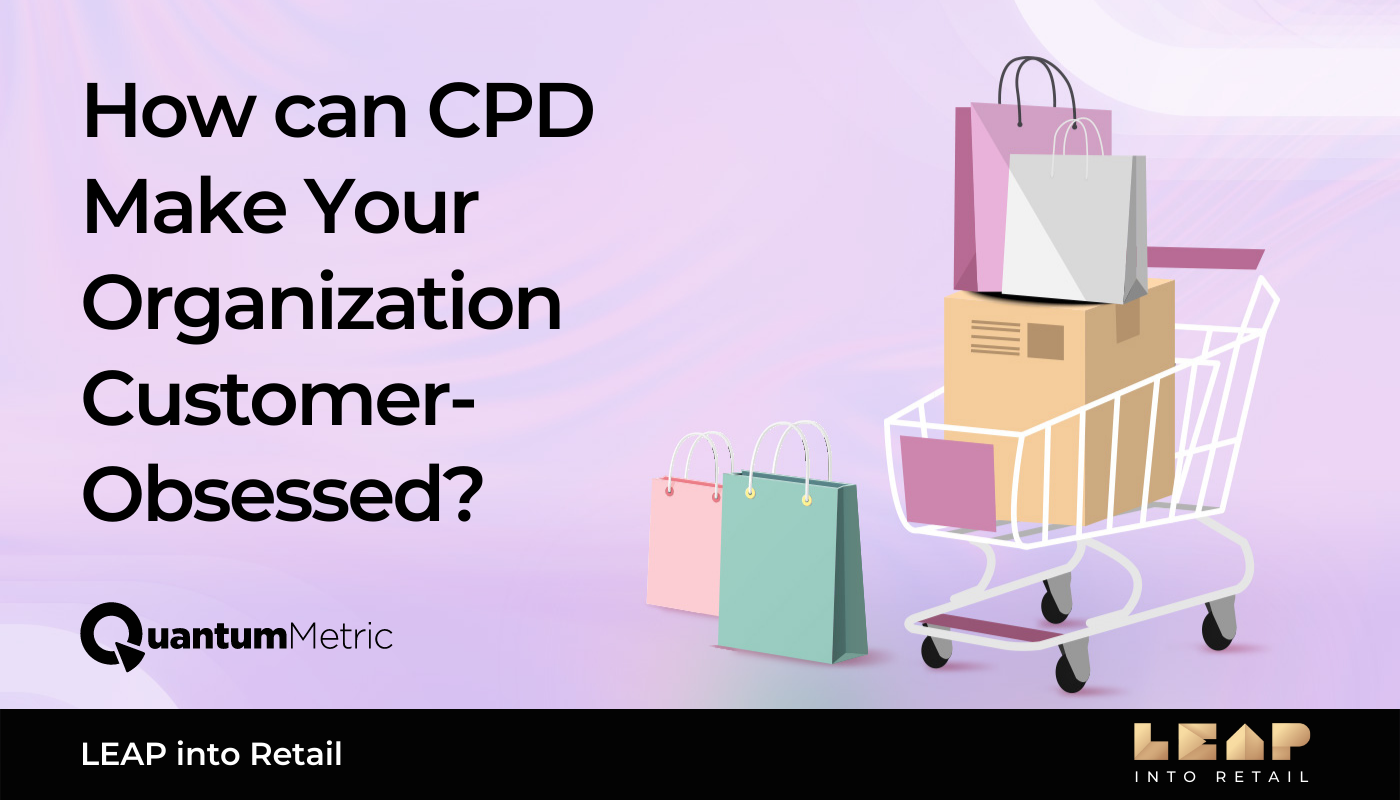How can CPD make your organization customer-obsessed?

The only way to out-innovate Amazon is to be like Amazon. The retail giant has shown that the customer is king and if others want to compete, they need to be equally obsessed with theirs.
So how do leaders embed customer obsession throughout the business?
By embracing Continuous Product Design, a new methodology developed by Quantum Metric, retailers can:
- Build customer-centricity in company culture
- Know when to listen to customer needs (and when not to)
- Establish opportunities for innovation
Retailers need to be obsessed with everything about the customer to deliver a fast and easy ecommerce experience.
Here’s how.
Maintain a 360-degree view of the digital product.
Digital teams at retail enterprises–including IT/Ops, UX design, and engineering–often work in silos, which leads to poor communication across the board. This makes it difficult to prioritize the stakeholder that matters most: the customers.
Data from the customer service center, for instance, is often disconnected from the mobile shopping experience. Most organizations can calculate funnel abandonment and conversion rates. But they fail to understand what is actually happening with the customer experience.
The solution? Linking 5 types of data to customer segments is crucial to obtaining that 360-degree view of the customer:
- Business data/sales data
- Behavioral data
- Technical data/page performance
- Voice of customer/surveys/call center data
- Customer experience viewing data
Continuously quantify the business impacts linked to customer experience.
Many organizations don’t realize that conversion rate optimization and UX design go hand in hand. Broken links, confusing copy, and clumsy designs don’t just leave customers frustrated. They also negatively impact conversion rates and revenue.
It goes without saying: The shopping experience–from browsing shoes to making a purchase–should be seamless. That said, it’s just as important that digital teams prioritize the features that have the greatest impact on the customer experience.
Integrated customer experience viewing throughout the product lifestyle.
Struggling to understand why shoppers keep abandoning their carts?
As it turns out, many of the UX errors related to cart abandonment–broken buttons, mislabeled forms, and confusing copy–cannot be detected by traditional analytics tools alone.
This means that retailers need to use technology such as Quantum Metric’s session replay. This uniquely secure data capture method empowers teams across the enterprise to understand what exactly is giving users a headache. More importantly, it enables teams to discover how many other users are experiencing a similar problem.
Participate in constant cross-team collaboration with a single version of truth.
One of the biggest challenges that retailers face is aligning their teams around one goal: enhancing the customer experience.
Unfortunately, this is difficult to do when data sets used by engineering and IT/Ops are often very different from those used by UX designers and marketers.
With Continuous Product Design, each team shares the data that matters most to the customer. Of course, each team will continue to use their own data sets, but they need to ensure that they are all working towards the same goal: creating value for both the customers and business.
When organizations democratize data, every single person can make decisions based on what the customers actually want. This takes the guesswork out of determining which products or features to build.
Detect anomalies in consumer behavior and system.
Oftentimes, shoppers fail to make a purchase because a button isn’t working or a payment API isn’t connecting. Glitchy user experiences, especially ones that force customers to re-enter their credit card information, can prompt shoppers to leave your website for a competitor’s
And let’s be real: No one wants to leave their customers with a long-lasting negative impression of their brand.
In today’s digital-first world, it’s no longer enough to address technical errors and other glitches after they occur. With anomaly detection technology, brands can catch sudden changes in conversion rates in real-time.
Observe customers continuously across the broader ecosystem.
Retail shoppers are continuously moving between mobile apps, desktop websites, social media, and in-person experiences. It’s safe to say that traditional customer journey mapping is over.
Now, the customers can take an infinite number of paths, from the first touch digital touch point to a conversion. With Quantum Metric Journeys, brands can develop a better sense of how customers move through their digital products to achieve desired goals, such as a sale or an account login.
Interested in hearing more? Join us at LEAP into Retail.
Interested in learning more about how brands are preparing for the 2021 holiday shopping season? On September 14, 2021, Quantum Metric will host LEAP into Retail, a one-day virtual conference focused on how retailers can build better experiences for online shoppers.
Join our panel, “Planning for the holiday rush: Lessons learned from a peak year,” to hear
The North Face’s Scott Martin and Neiman Marcus’ Alek Nelson speak about the the lessons he learned from the 2020 holiday rush and his expectations for the upcoming season including:
- How retailers can respond to the heightened importance of the 2021 holidays
- Shopping behaviors and motivators to expect
- What retailers need to be doing now to prepare








